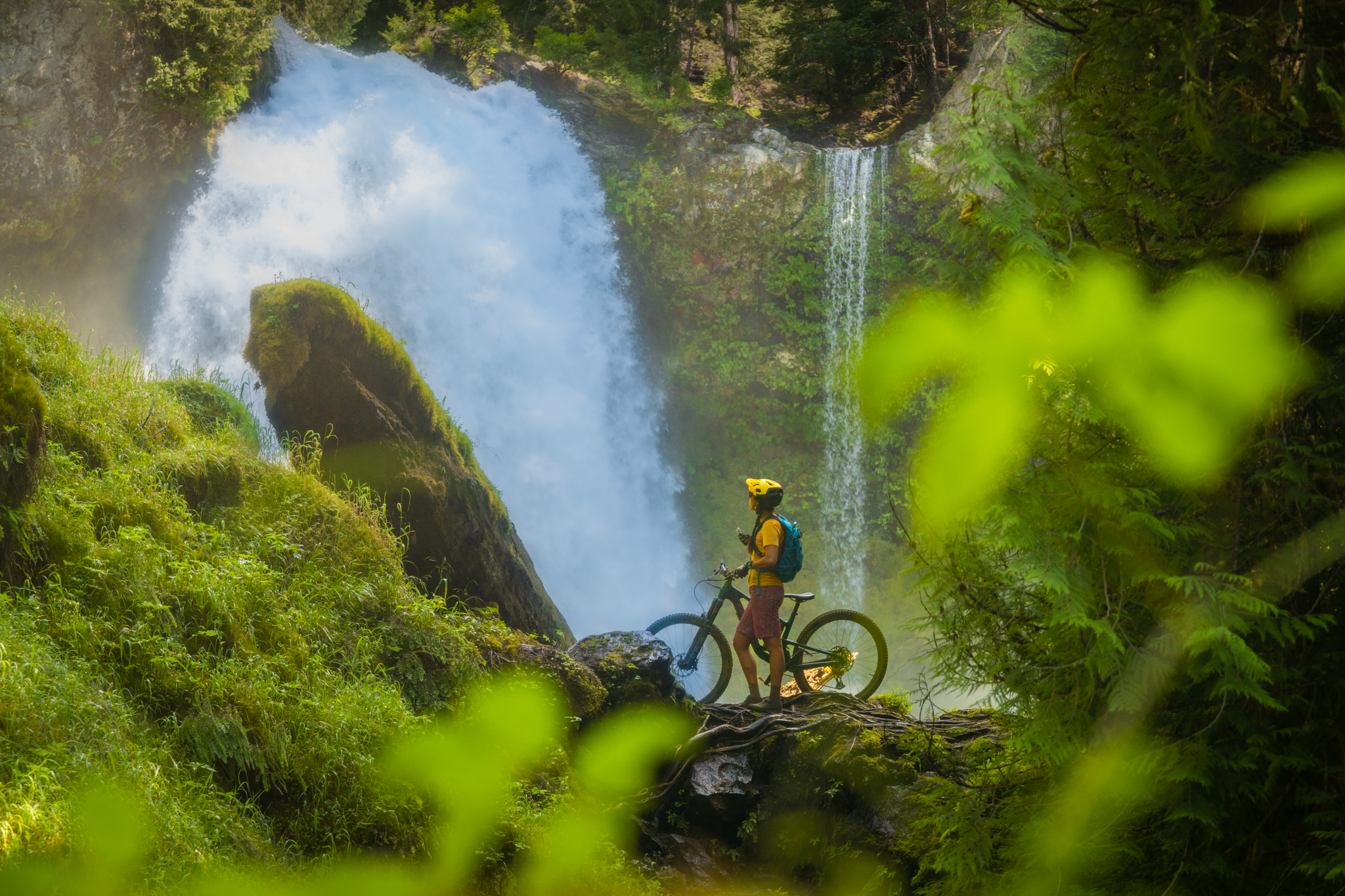Whether touring the backcountry on an ultralight hardtail, running laps at the local downhill bike park, or just out for a ride on a local trail, mountain bikers of every blush use hydration packs to enhance protection, hold water, and store ride essentials like snacks, tools, and weather gear.
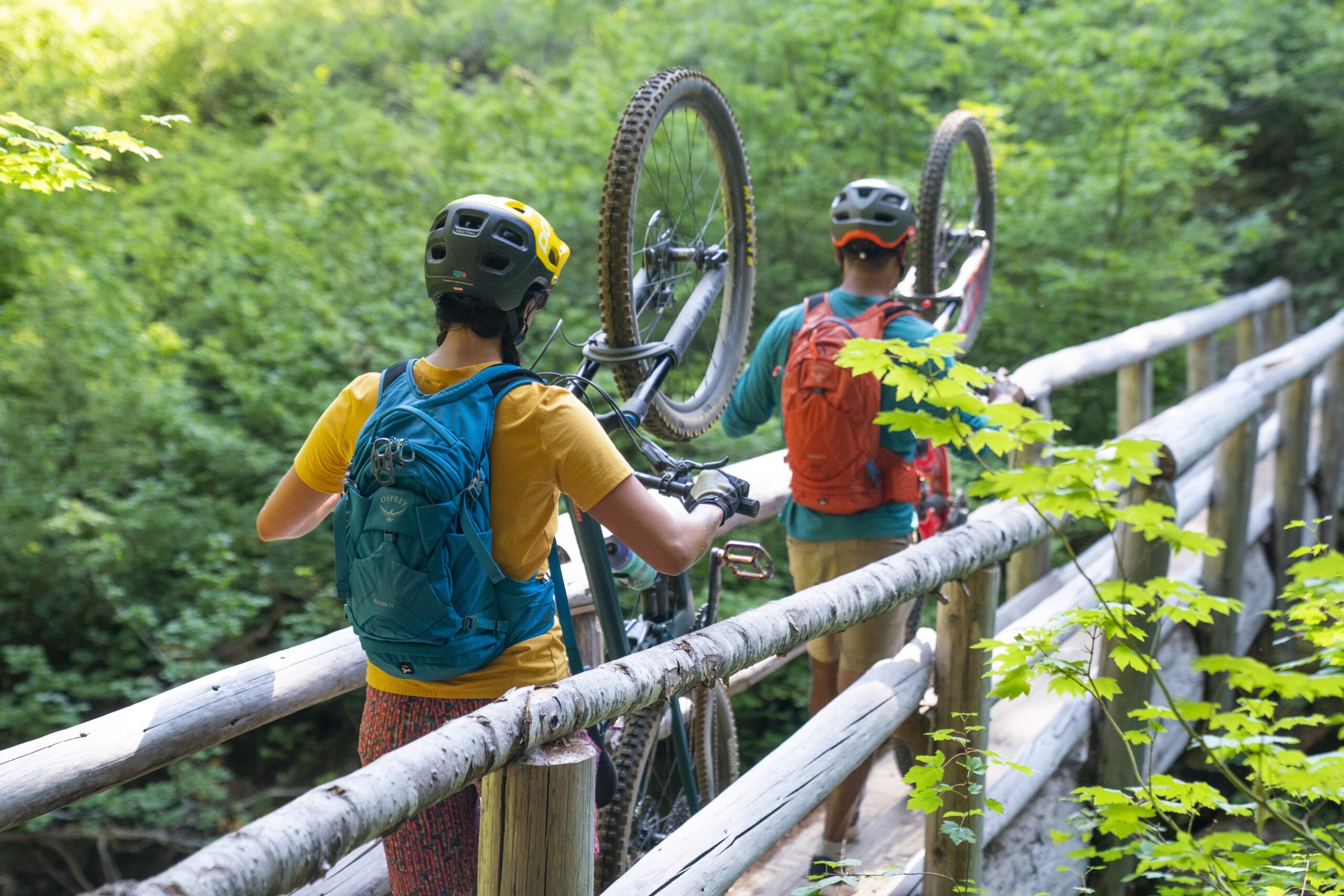
There are a ton of biking backpacks on the market that offer a wide variety of features that cyclists with different interests may love or hate. Key features to consider in hydration packs include overall capacity both for water and gear, protective padding, breathability, and fit. So, how do you find the right one?
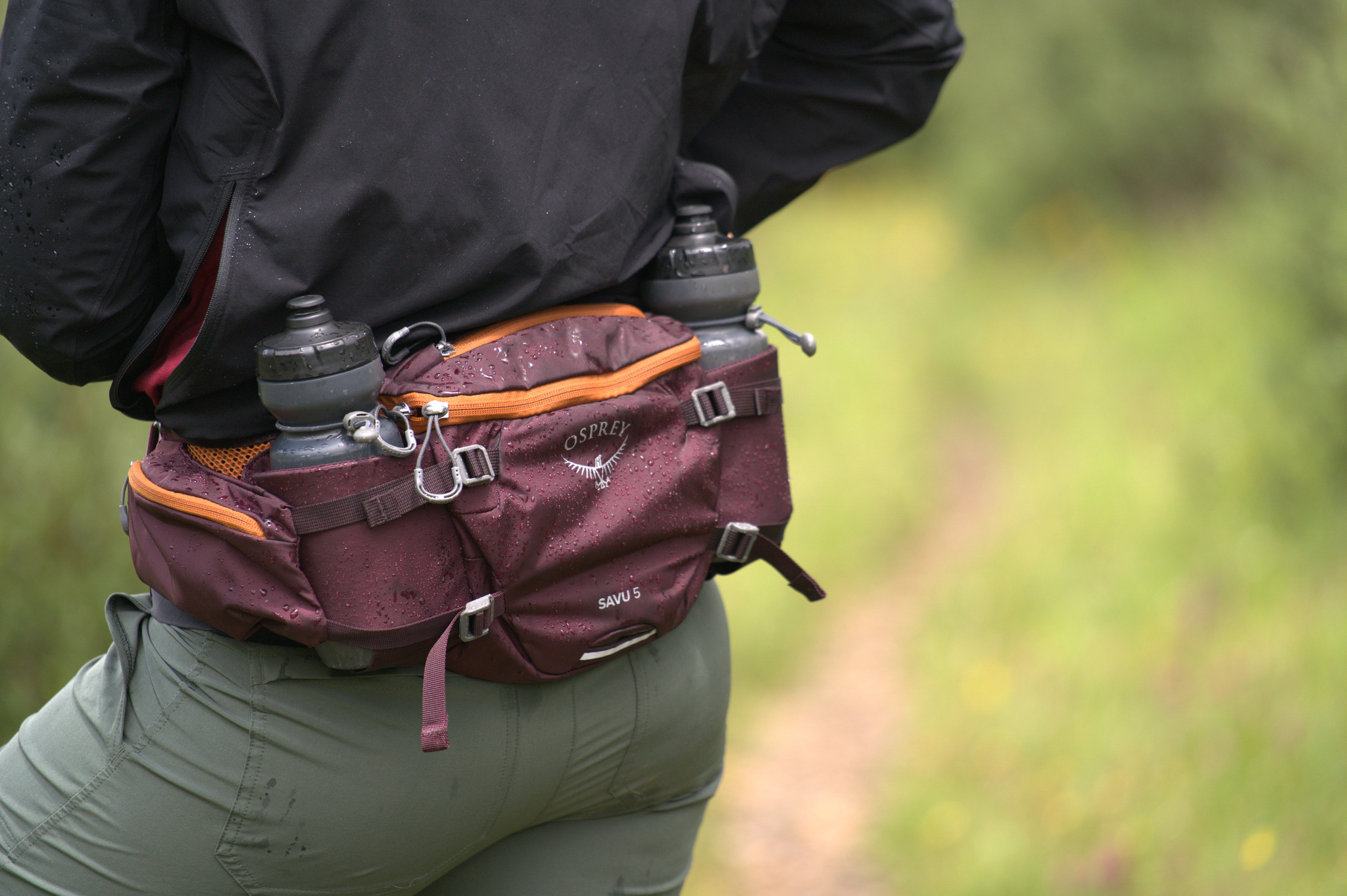
Osprey is an industry leader in hydration packs, offering multiple cycling-specific models with different designs for men and women, and even a kid’s option for little shredders. Looking into the design and features of Osprey’s products, we’ll go over which types of packs are ideal for everything from bikepacking to downhill.
Raptor/Raven
The men’s Raptor and women’s Raven range from Osprey represent the beefiest packs in the brand’s lineup. These packs come in 14 and 10-liter volumes and are loaded with the same key features across each model, but have some finishing design touches made specifically for a men’s or women’s fit.

Each pack, whether in the 10- or 14-liter option, comes with an Osprey Hydraulics LT 2.5-liter reservoir with quick-zip access, along with a sternum strap and a magnetic bite valve attachment that will keep the mouthpiece reliably in position rather than flopping around.
These packs also include a bike tool organization compartment and a roll-up tool pouch to keep tools and other ride essentials secure, along with a scratch-free and heat-embossed zippered stash pocket to store more delicate items like sunglasses or electronics.
Other features include a LidLock helmet storage attachment that fixes a helmet to the top of the pack, a stretchy mesh hip belt with front pockets to store extra equipment, and a blinker light attachment and a reflective patch for extra visibility.
The Raptor Pro 18 unisex hydration pack takes the Raptor/Raven lineup to a new level with even stronger construction and safety features designed for the gnarliest rides. The Raptor Pro 18 bumps up the volume to 18 liters for even more hydration and storage. It also comes equipped with a D30 BP4 Full Back CE Level 1 back protector that absorbs impact in a fall.
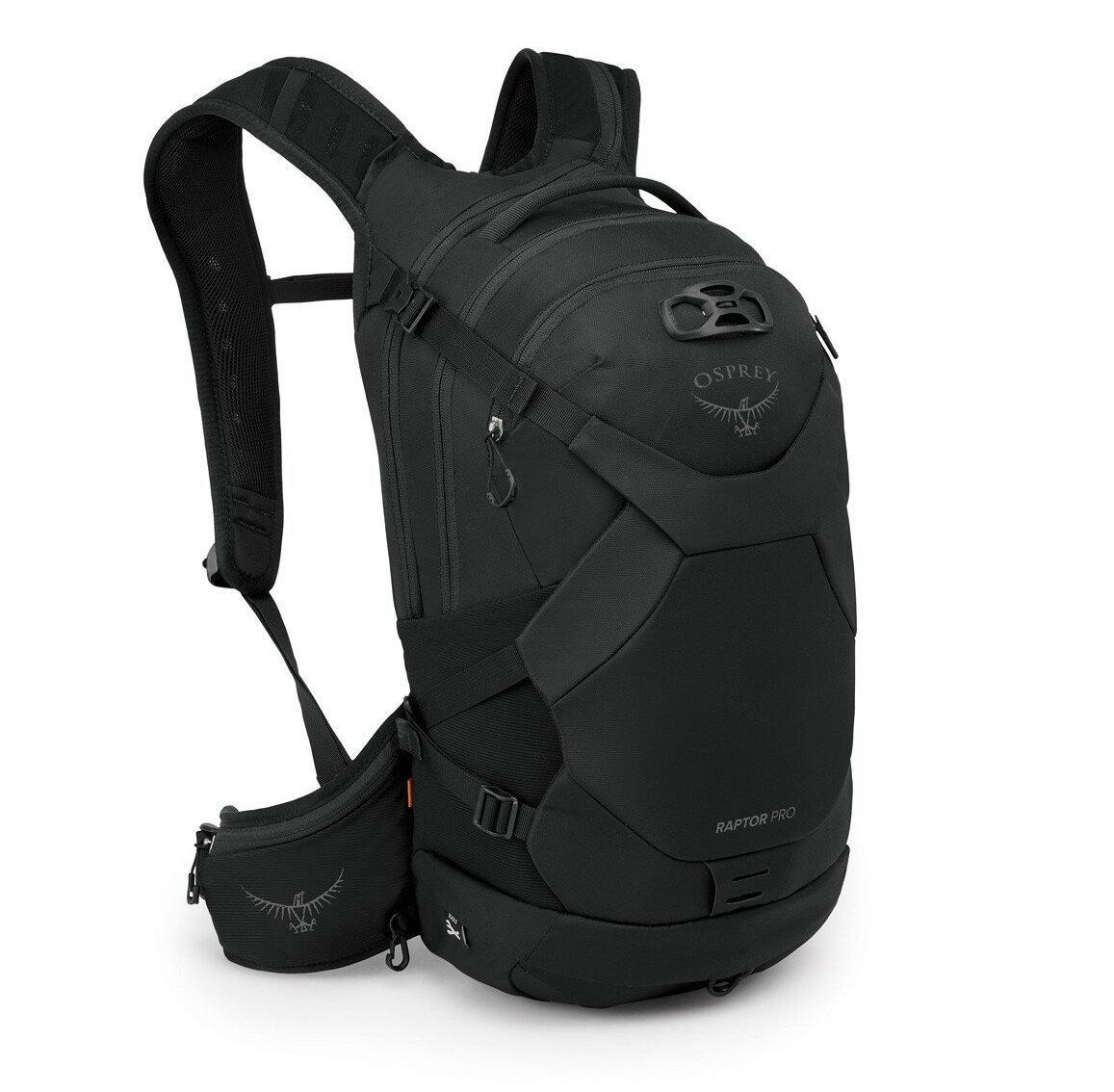
The Raptor Pro carries advanced protection features and highly-durable construction that make it a go-to choice for downhill or enduro riders. Spinal protection and the ability to stash a full-face helmet along with enough gear and water for big days at the bike park or across technical trails is a big draw.
The baseline Raptor and Ravel 10 and 14 options still function well for these styles of riding, but lack that added layer of protection. These models would be ideal for riders who stick to more tame downhill courses or trails, or who value having a high capacity to carry gear and enjoy long trail rides and full days on the bike.
The Raptor and Raven lines start at an MSR of $165 for the 10-liter pack, while the 12-liter goes for MSRP of $175. The Raptor 18 Pro goes for an MSRP of $280.
Syncro/Sylva
The Syncro and Sylva lineup from Osprey shines in hot and humid conditions, or in climates where riders can expect the weather to turn without much notice. The men’s Syncro pack comes in 20-, 12-, or 5-liter options, while the women’s Sylva comes in a 12- or 5-liter option.

The Syncro and Sylva range is all about a streamlined profile and maximum ventilation. Both packs feature a 2.5-liter Hydraulics Reservoir for water and the same nifty magnetic bite valve attachment to keep the pack’s hose where it belongs. Other features found on the Raptor and Raven can also be found on the Syncro and Sylva, including a front stretch mesh pocket, LidLock helmet storage attachment, and a blinker light attachment.
The Syncro and Sylva make a statement all their own with an added integrated high-visibility rain cover and an Airspeed suspension system that keeps the pack off of the back.
A tensioned mesh back panel rests on the back, instead of the pack itself, creating a small buffer of space between a rider’s back and the pack. This allows are to flow freely over the back, reduces sweat, and allows for a quicker dry time.

Likewise, its harness comes with a new shoulder strap with a new bike-specific shape that includes soft and breathable mesh contact surfaces and additional ventilation.
The smaller packs have a waist strap with padded hip wings, while the larger 20-liter pack features a mesh hip belt with pockets for a more stable feel and additional storage.
The increased ventilation and monster capacity offered in the Syncro and Sylva lineups provide an attractive option for people who spend a lot of time riding in hot climates, or who spend a lot of time pedaling, rather than charging downhill. Backpackers in particular may find that the Syncro and Sylva are great options for their added comfort and rain cover.
Syncro and Salida packs start at an MSRP of $145 for the five-liter pack, and top out at an MSRP of $180 for the 20-liter Syncro.
Siskin/Salida
The Siskin and Salida packs offer many of the same features as Osprey’s two larger packs, but with less storage capacity for riders who don’t need to carry as much equipment. Both the men’s Siskin and the Women’s Salida come in 12- and 8-liter options and include the same 2.5-liter LT Hydraulics reservoir as the other packs.

The reservoir compartment of the pack features a direct-access zip path for easy access, while a U-zip opening is used to access the main storage compartment.
The Siskin and Salida packs provide added stability for riders with a rolled, soft-gelled harness and air mesh hip belt, along with added comfort and ventilation through an Avalon foam frame sheet and Airscape back panel to increase ventilation while keeping the pack close to a rider’s body.
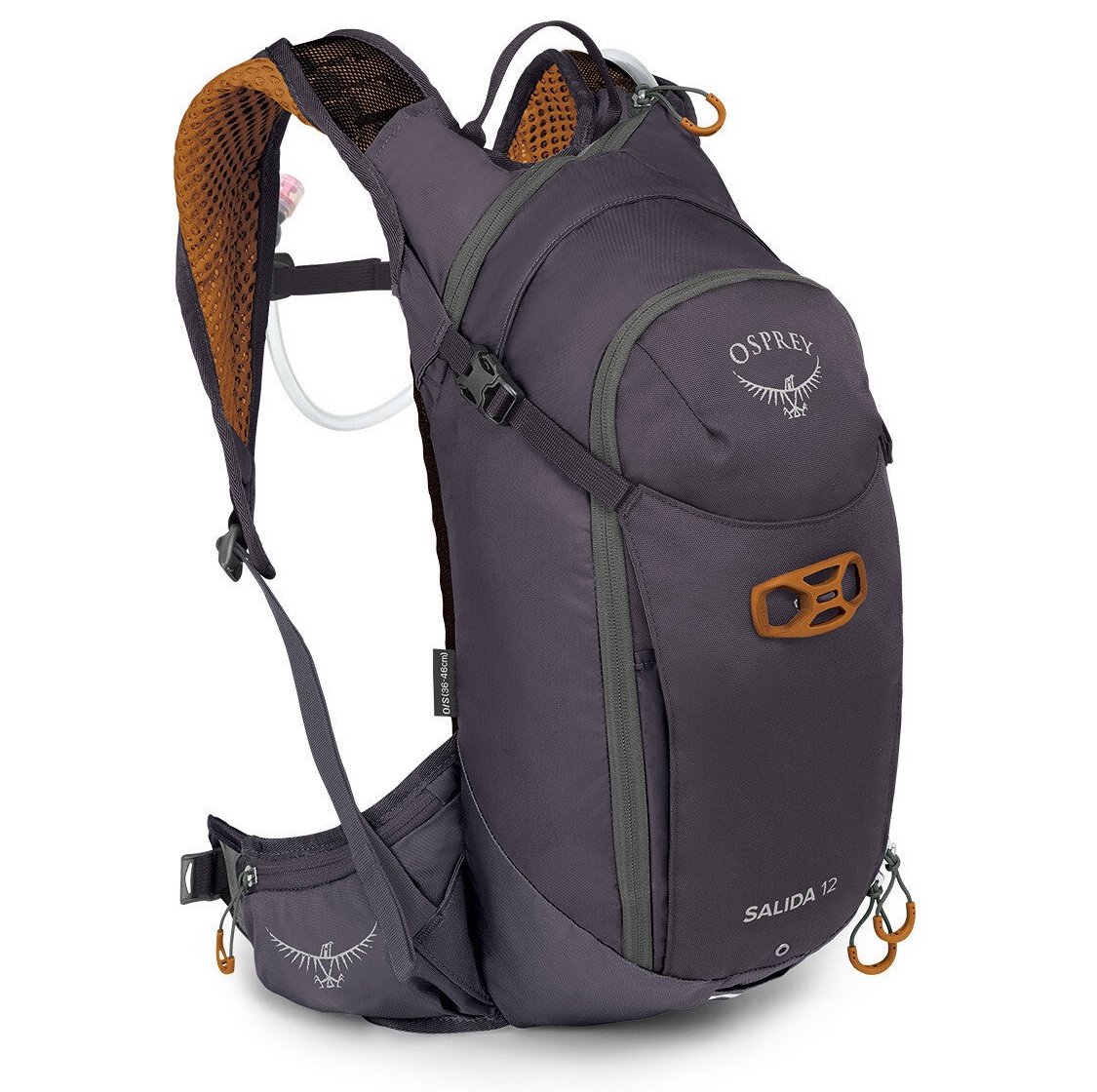
The packs contain enough storage for ride essentials like tools, spare tubes, and small additional layers, making these packs ideal for everyday rides over epic adventures in the backcountry. Most trail riders would probably find these packs to be more than capable of getting them out to the trails and back home without any problems or unnecessary bulk.
Siskin and Salida packs cost an MSRP of $130 or $140.
Katari/Kitsuma
The men’s Katari and women’s Kitsuma hydration packs are the smallest in Osprey Hydration pack lineup, not including hip packs. They have enough space for the bare bones of riding gear, like a multitool and tube, or a small snack, along with either 1.5 or 2.5 liters of water. Both the 7-liter and 3-liter packs come equipped with a 2.5-liter Hydraulics LT Reservoir, while the 1.5-liter pack comes with a 1.5-liter reservoir.
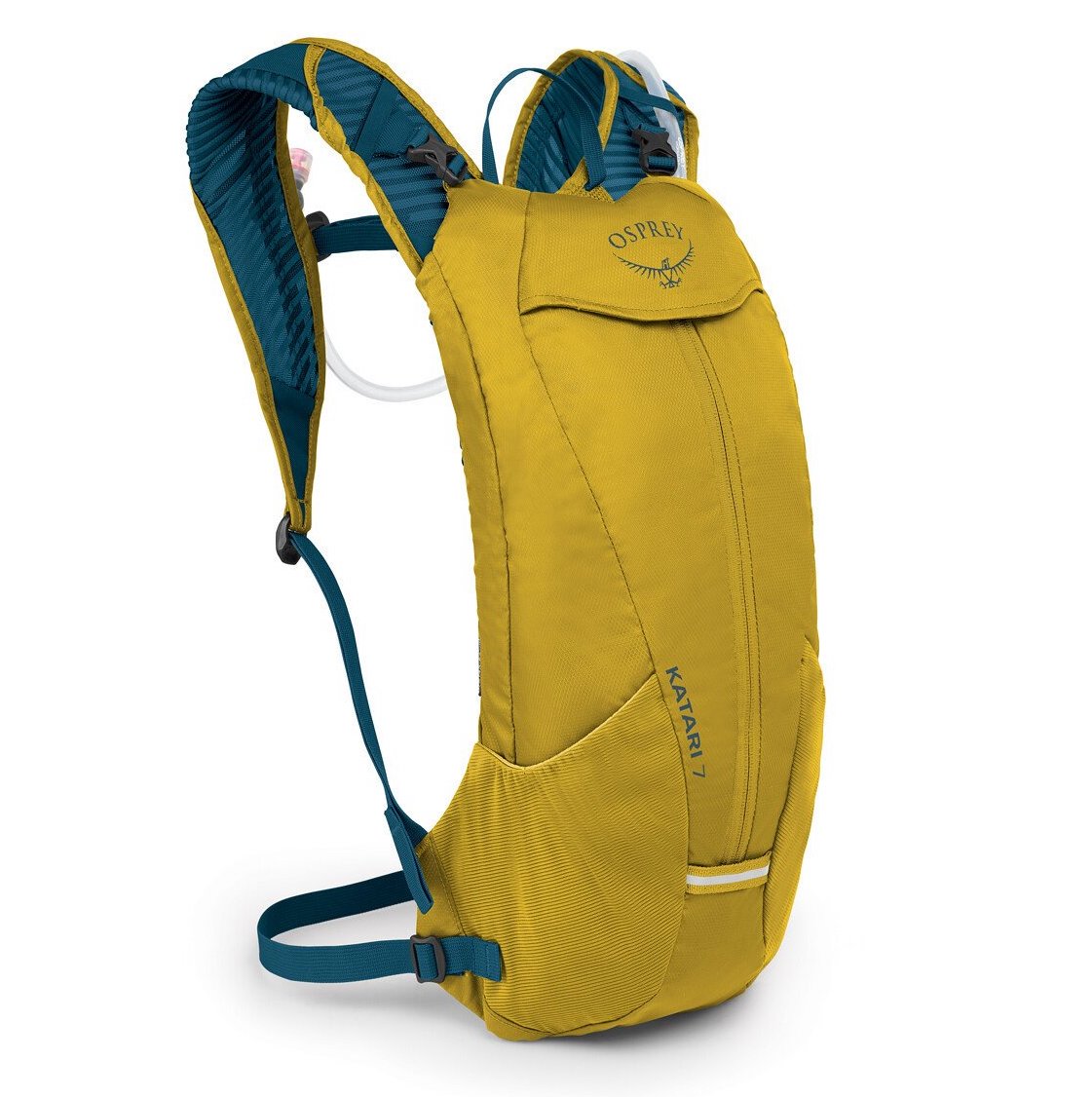
These packs are small and light, featuring an Avalon foam frame sheet and an Airscape suspension with a center air channel for increased ventilation.
The largest of the Katari and Kitsuma offerings feature a removable hip belt for more stability.
All of these packs come with an external reservoir sleeve, a blinker light attachment, an external, scratch-free zippered pocket for glasses or electronics, and dual mesh side pockets.
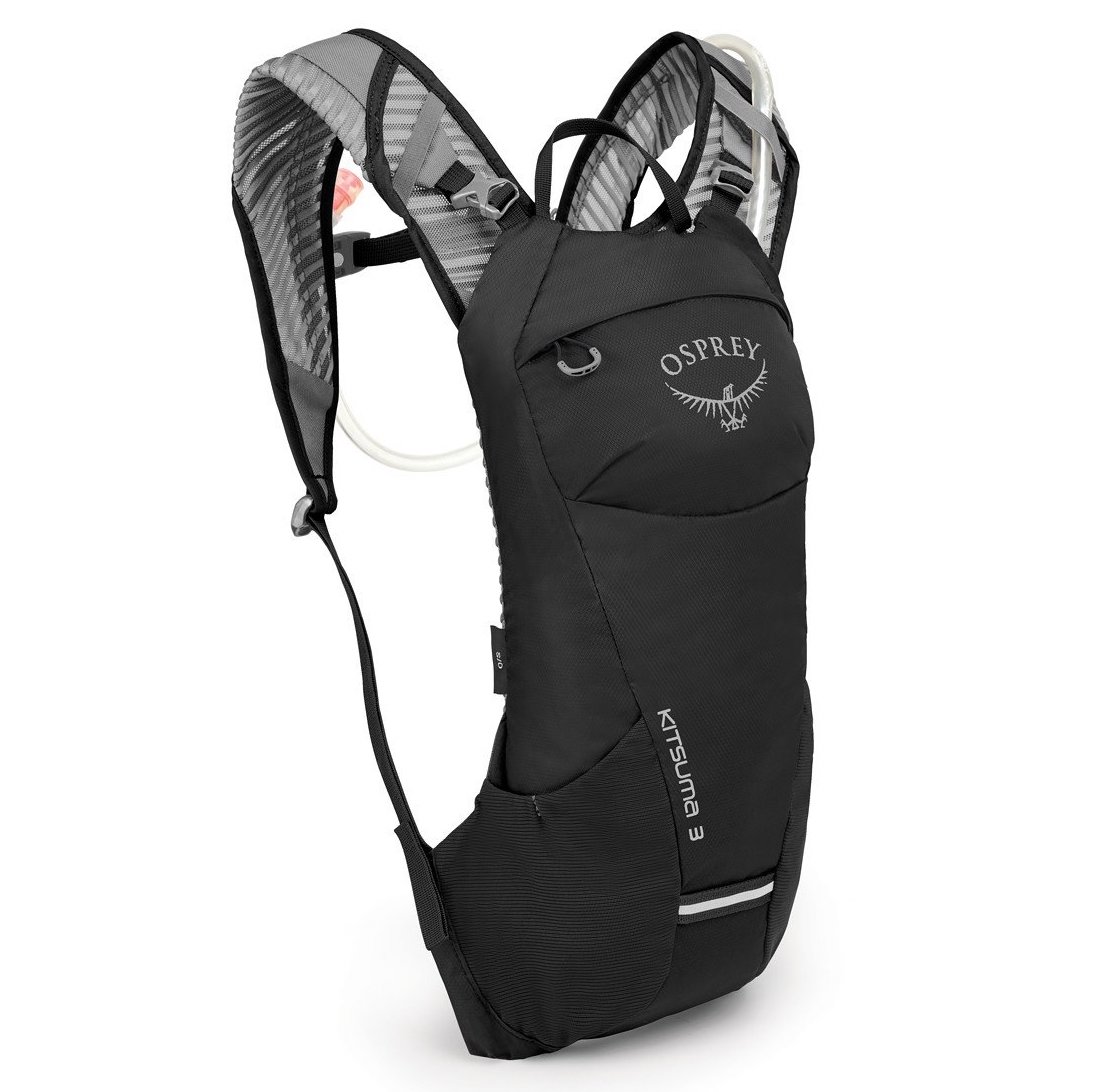
While the Katari and Kitsuma packs are small, they are built for speed and ease of use. They’ve been stripped down to offer only the essentials riders need to carry, so riders do not have to deal with any unnecessary weight or material whatsoever. These packs are great for gravel or fast XC riding where weight and aerodynamics matter, or for folks who ride close to home and in conditions where a ton of gear isn’t required. They are also great for riders who keep a good amount of their gear in bags attached to their bikes. Smaller bags mean less weight rests on the body, making them typically more comfortable, even on longer rides.
The Katari and Kitsuma packs start at an MSRP of $70 and top out at an MSRP of $90.
Savu/Seral
Osprey’s Seral and Savu hydration packs are hip-mounted packs that can function with a reservoir or water bottles, depending on the model. The Seral comes in either 7- or 4-liter options that include a 1.5-liter Hydraulics LT 1.5-liter lumbar reservoir. The Savu comes in 5- or 2-liter options, the larger of which can hold two bottles, while the smaller can hold one.
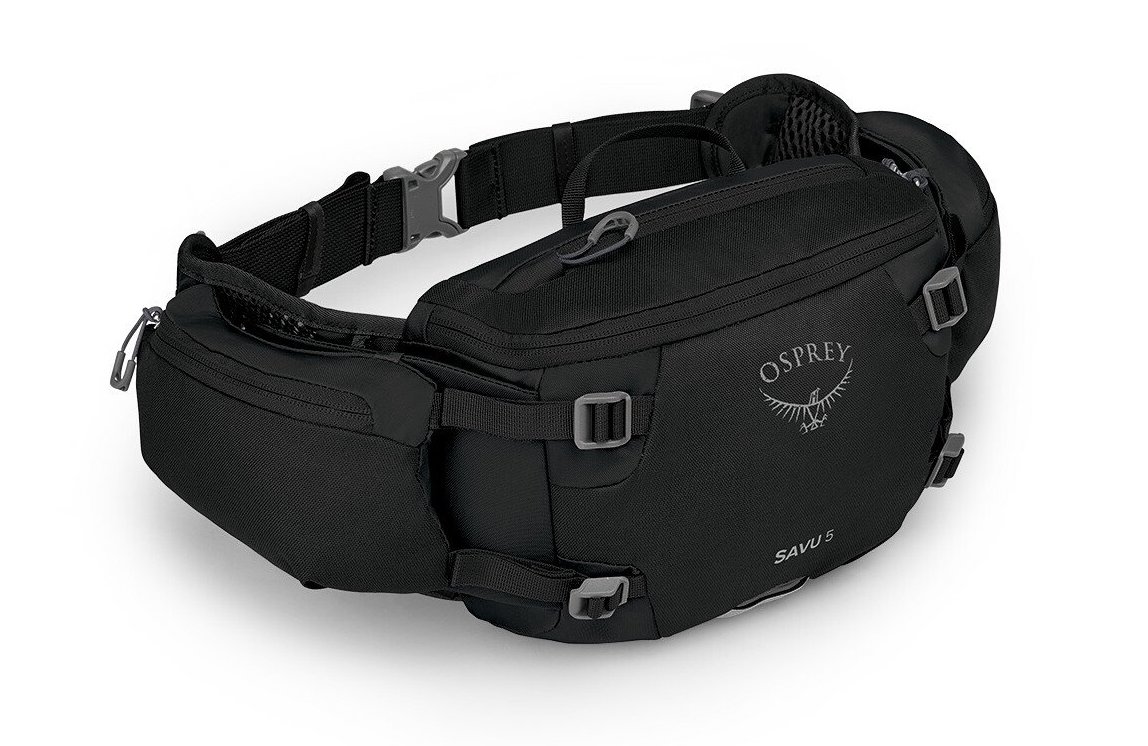
Like the Katari and Kitsuma, the Seral and Savu are ideal for people who don’t need to carry a lot of gear, or who dislike the feeling of a pack on their back, which can lead to increased sweating and discomfort from added weight, especially in more aggressive riding positions.

While the Seral includes a reservoir, the Savu allows riders to stash bottles instead. This makes refilling easier as riders won’t have to remove the pack to fill up, and also makes it easier to drop in supplements like Nuun or other hydration powders.
Savu packs go for an MSRP of $55 or $65, while Seral packs cost either $90 or $110.
This post is sponsored by Osprey. Learn more about Osprey hydration packs at Osprey.com
